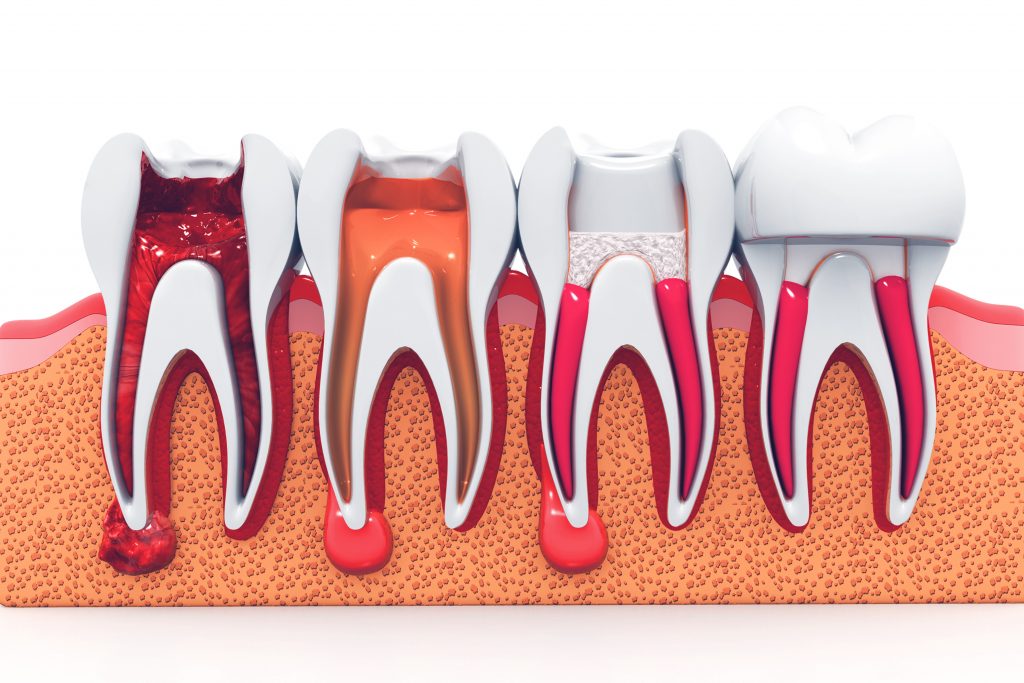
Root canals have a reputation for being scary and painful. Of course, they’re never ideal but when you need one, you really need one. The course of extracting the infected pulp inside the chamber of the tooth is crucial in saving your natural tooth. Upon deciding to go forward with a root canal, you should know what to expect. Millions of root canals are performed around the world every year, helping preserve tooth health and smiles of the patients. Yet, people are outright scared of the root canal treatment. It is important that this perception is changed. For this purpose, you need to understand the ins and outs of the procedure and what it entails.
What is a Root Canal?
A root canal is not exactly a treatment. It is the hollow part inside a tooth containing blood vessels, cells and the nerve tissue. Root canal treatment entails the removal of everything that is inside the root canal. It is then cleaned and decontaminated by the dentist, who shapes it with tiny irrigation and file solutions.
The space is then filled with a rubber-like material and sealed using special cement. Subsequent to the root canal procedure, the patient does not feel any pain in the tooth. The tooth will already be dead because of the removal of nerve tissue and elimination of the infection. As soon as the root canal is completed, a permanent crown or filling is required for protecting the tooth.
How Do I Know If I Need a Root Canal?
The root canal structures around the pulpy interior of a tooth. The crown lies above the gum, whereas the roots are below it which link the tooth to the jawbone. Within the root and the root canal, the pulp is present. The pulp has soft tissue with blood vessels and nerves. Its purpose is to nourish the tooth and moist the surrounding material. If the pulp becomes injured or diseased, it cannot repair itself, and the tissue dies.If there is a deep cavity, a cracked tooth, or a loose filling, bacteria can enter the pulp.The bacteria will eventually destroy the pulp. If the bacteria penetrate through the root openings, it can cause an infection in the bone.An infection will weaken the bone and break it down. The ligaments around the tooth will swell, and the tooth will become loose. A pulp injury will make the tooth sensitive to high and low temperatures. There may be pain when chewing, and some people have a continuous, throbbing pain.Without treatment, the infection will spread. Eventually, the tooth will become loose and need extracting. The nerves in the pulp can sense coldness and hotness as pain. Once the pulp is infected, it is likely that the infection spreads through the root canal system of the tooth, gradually leading to an abscess. An abscess is a swollen area where pus accumulates, causing inflammation of the tissues surrounding the tooth. An abscess has various symptoms ranging from a dull ache to a sharp pain. The tooth also feels tender when you are eating. If root canal treatment is delayed, the infection begins to spread eventually. In the absence of treatment, the tooth becomes loose and has to be extracted. Some patients may rather have the tooth pulled out, particularly if there is a lot of pain and the tooth is so decayed that it cannot be restored. However, removing a tooth can also result in crooked area that surrounds the teeth. Not only does it look unpleasant, but can make it extremely difficult to eat properly. Root canal therapy is performed to save the tooth as well as to eliminate pain altogether.In more severe cases, where the tooth cannot be saved, another option is to get an implant. However, it is healthier to save the natural tooth, as nothing can function better. Root canal therapy takes between one and three sessions to complete and involves a few steps.
How Painful is It?
The first thought that comes to people’s minds about Root Canals, is that they are extremely painful and uncomfortable. However, when an expert performs the treatment, it is relatively pain-free. Contrary to popular belief, the pain is actually from the infection and not due to the treatment. The tooth along with the surrounding area is numbed using local anesthesia for relieving the pain of the process. It is quite normal to experience some tenderness. The pain can be short-lived and is relieved by over the counter medication. Prescription drugs, like codeine, are also available if required. An antibiotic can also be prescribed for preventing infection.
Dr. Gregory Skeens and his team at Encinitas Family Dentistry California specializes in Root Canals. Dr. Skeens has the expertise needed to help and are devoted to enhancing your naturally beautiful smiling using state-of-the-art technology.
Call (760) 944-9288 to Make an Appointment with Dr. Skeens and learn more about the Dental care for you to achieve a Healthy & Beautiful smile.







 LEARN MORE ABOUT OUR GUIDING PRINCIPLES AT ENCINITAS FAMILY DENTISTRY
At our core, Encinitas Dentistry is a dental practice devoted to restoring and enhancing the natural beauty of your smile. How we accomplish that goal is what makes us stand out. We mingle time-tested approaches to oral care with state-of-the-art technology and procedures to deliver beautiful, long-lasting smiles!
LEARN MORE ABOUT OUR GUIDING PRINCIPLES AT ENCINITAS FAMILY DENTISTRY
At our core, Encinitas Dentistry is a dental practice devoted to restoring and enhancing the natural beauty of your smile. How we accomplish that goal is what makes us stand out. We mingle time-tested approaches to oral care with state-of-the-art technology and procedures to deliver beautiful, long-lasting smiles!